Polymer Characterization Laboratory
Characterization/Testing Facilities at SPRC
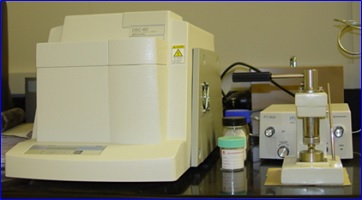
Shimadzu DSC-60, Japan - Differential scanning calorimetry (DSC) This instrument measure the crystallization behavior, glass transition temperature (Tg), and the specific heat of the resin. The heating and cooling rates and the temperature ranges of the test could be changed to give us a wide range of testing conditions. |
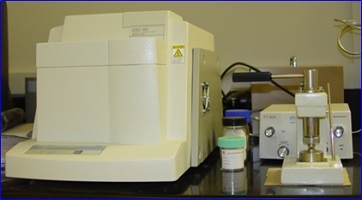
Shimadzu DSC-60A, Japan - Differential scanning calorimetry (DSC) This instrument measure the crystallization behavior, glass transition temperature (Tg), and the specific heat of the resin. The heating and cooling rates and the temperature ranges of the test could be changed to give us a wide range of testing conditions. |
|
This instrument measure the crystallization behavior, glass transition temperature (Tg), and the specific heat of the resin. The heating and cooling rates and the temperature ranges of the test could be changed to give us a wide range of testing conditions.
|
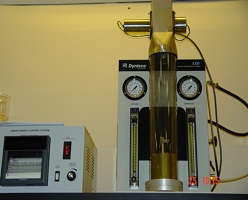
Limiting Oxygen Index (LOI by Dynisco) The instrument is used to characterize the flammability of polymers and composites. In this technique the percentage of Oxygen needed to sustain the flame in a standard sample is determined. Also notice is made to the "dripping" behavior of polymers during burning. Moreover, the LOI equipment has a smoke density analyzer which could differentiate between different polymers based on the emitted smoke during burning. |
|
This equipment characterizes the viscoelastic and rheological properties of polymers and their blends. The rheological properties are characterized in the melt state using a parallel-plate arrangement. This analysis allows us to measure the melt viscosity as a function of temperature or shear rate. Whereas, the viscoelastic properties are characterized using a torsional arrangement. In this analysis the storage and loss modulus are determined. |
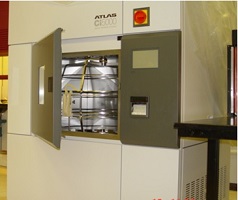
Weather-Ometer, Atlas Ci 5000, Xenon It is an apparatus that uses extensive UV radiation as an accelerated method to simulate the effect of ambient UV radiation on the plastic parts. The plastic part or sample could be irradiated at different temperatures, for different length of time, and with or without water exposure. The sample is tested after the irradiation to study the effect of UV exposure on the properties. This test is best done along with an actual UV exposure in sun light. This will enable us to correlate real life exposure to the accelerated test data. |
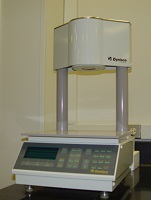
Melt Flow Index instrument, (Dynisco) This instrument measures the weight of resin that flows under constant load through a specific die in 10 minutes. The MFI value is reported as ## g/10 min. The test is done under constant load, temperature, and dwell time. To gain more information about the resin "flowability", MFI could be done at different loads, temperatures, and dwell times. The MFI gives an indication of the melt viscosity of the resin. It could be used as a QA/QC method. It could also be used as a preliminary method of studying the effect of molecular weight changes or additives or processing temperatures on the "flowability" of resins. |
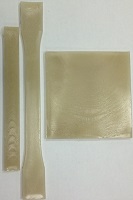
Tensile Strength (Hounsfield H100 KS) Hounsfield is a versatile polymer testing machines can perform many materials test that meet ASTM, ISO and other international specifications, including tensile and flexural tests. |

Izod Impact Tester (Model XJF 22/50) of AMSE. Italy) This multi-test instrument is used for the determination of polymers and composite materials resilience according to both Charpy and Izod methods. |
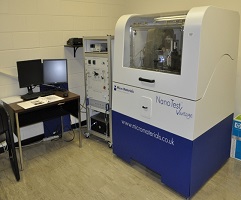
Nano Indenter (NanoTest, UK) Nano-indentation is a robust technique for determination of thin film properties for which conventional testing are not feasible. Nano-indentation can be used for determination of local properties of homogeneous as well as heterogeneous materials. Capable of conducting:
|
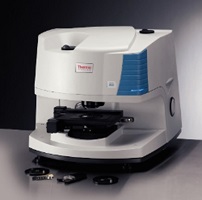
FTIR- ATR (Nicolet™ iN™10) This infrared microanalysis has the ability to measure samples down to a few microns. This IR microscope provides answers with the high degree of confidence required by analytical laboratories. Attenuated total reflectance (ATR) is a sampling technique used in conjunction with infrared spectroscopy which enables samples to be examined directly in the solid, liquid or gas state without further preparation. |
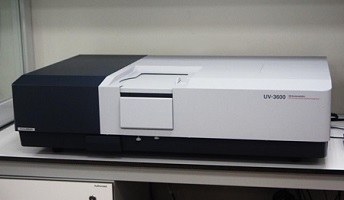
UV-VIS-NIR Spectrophotometer, UV-3600 - Shimadzu The UV-3600 can handle measurement with highly precise transmittance and reflectance, and uses three detectors to handle a range going from the ultraviolet region to the near-infrared region. It has applications in agriculture, material research and in packaging area. |
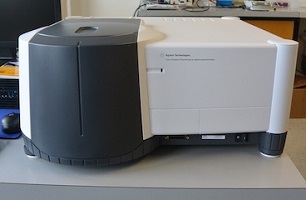
Fluorescence spectrophotometer with a Xe flash lamp - (Agilent Cary Eclipse , Agilent technologies, USA) With unique, xenon flash lamp technology the Cary Eclipse is capable of fluorescence, phosphorescence, chemi/bioluminescence measurements. It is ideal for samples sensitive to light and with exceptionally fast data collection. It has applications in a range of disciplines from biology to materials science. |
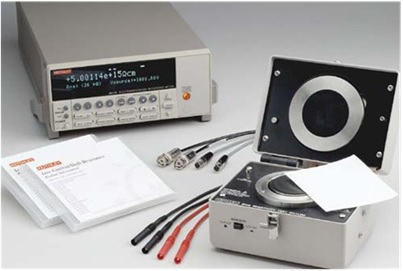
Keithley 6517B Electrometer/High Resistance Meter (with Keithley 8009 Resistivity Test Fixture) The 6517B offers auto ranging over the full span of ranges on current, resistance, voltage, and charge measurements. The 6517B combines the following measurement capabilities:
|
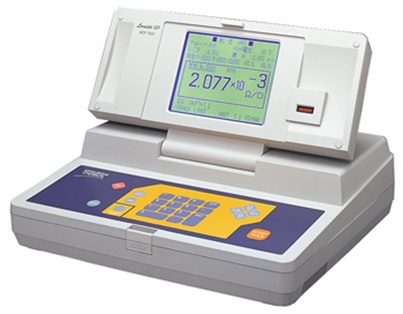
Low resistivity Meter (Loresta-GP, MCP-T610 from Mitsubishi, Japan) The Loresta GP Meter is an intelligent, multi purpose low resistivity meter equipped with software that calculates resistivity correction factors. A variety of 4 pin probes are available for use with the Loresta GP. The instrument is typically used in Product Engineering, R&D, and Quality Control. Applications include measurement of conductive paint, conductive plastics, conductive rubber, conductive film, antistatic materials, EMI shield materials, conductive fiber, conductive ceramics, etc. MCP probe enables one-touch reading Ohms, Ohms/sq., and Ohms cm. |

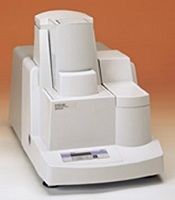 Shimadzu DTG-60H - Differential Thermal Gravimetric Analyzer
Shimadzu DTG-60H - Differential Thermal Gravimetric Analyzer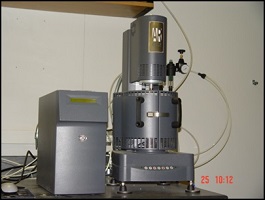 Ar-G2 (TA Instruments) - Thermo-Dynamic Analyzer
Ar-G2 (TA Instruments) - Thermo-Dynamic Analyzer